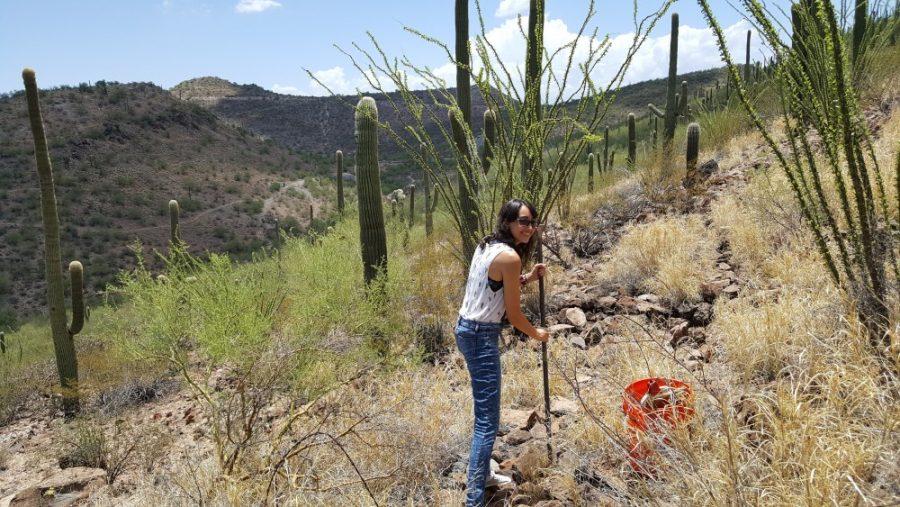Buffelgrass, an invasive species in the Sonoran Desert, causes wildfires to burn hotter and longer, damages the soil and its nutrients and out-competes native desert species. The grass, brought to the United States from Africa and southern Europe, was meant to revitalize the over-grazed cattle ranges of the Midwest, but once rooted, it spread to the dry Southwest, where it thrives and threatens native ecosystems.
Betsy Arnold, a University of Arizona professor of plant sciences, and Victoria Howard, an ecology and evolutionary biology and natural resources sophomore, said they hope to counter the spread of this invasive species by harnessing the results of their most recent research project.
While traditional approaches to combating buffelgrass have often focused on pesticides and labor-intensive manual removal, Arnold’s laboratory is taking a unique approach to studying the species and its spread.
“We are interested in the microbial communities that inhabit the interior and the surfaces of plants, how these communities have evolved and their potential human applications,” Arnold said.
These microbiomes are like a web of connections created between the plant and the bacteria, fungi and other organisms on its surfaces, and they can have a significant impact on the health of the plant as a whole, according to Howard.
RELATED: UA experts discuss the state of buffelgrass around Tucson
The study and cataloging of plants’ microbial communities can be useful in fields from sustainable agriculture to invasive species management.
This past summer, Howard trekked into the Tucson community to bring back a diverse collection of buffelgrass specimens for their laboratory research. One of Howard’s many stops was Tumamoc Hill. Located west of the university, the hill has been a home to scientific research for 115 years and is the site of UA’s Desert Laboratory.
Now back in the lab, Howard is isolating and cataloging the bacteria and fungi involved in mutually beneficial relationships with her buffelgrass samples. Howard hypothesized that buffelgrass’ unique microbial community helps it boost its natural defenses and growth, increasing its ability to overrun native plant communities.
“If there is a greater understanding of what role microbes play in the success of buffelgrass as an invasive species, new insights can be gained in not only its management but also in the restoration of invaded sites,” Howard said.
Beyond the science, Howard said her research with Arnold has expanded her educational experience, forcing her to apply the knowledge she has gained in her UA classrooms to the real world. Howard said she hopes to apply her research skills and knowledge further after graduation by studying invasive species for the U.S. National Park Services.
RELATED: Science around town: four Tucson events this spring
For Arnold, it is never too early for undergraduates like Howard to get involved in and benefit from research.
“Many students think they don’t know enough to get involved in research, but we are here to mentor and help students learn and develop as they go on to the future,” Arnold said.
The focus on undergraduate research, its collaborative community and talented young students like Howard are some of the major reasons that Arnold bases her research at the UA.
Now integrated into the laboratory community, Howard continues to invest time and passion in her project, hoping to one day publish her results and push back against buffelgrass’ invasion of the Tucson desert.
An Arizona native, Arnold said the Sonoran Desert has a special place in her heart, but her laboratory’s research extends far beyond the desert ecosystem. Arnold has studied microbial communities from the Arctic, South America and some of the world’s oldest rainforests in Borneo.
Arnold and Howard’s research is funded by UA’s Undergraduate Biology Research Program, the National Science Foundation, and their industry partners.
Follow Randall Eck on Twitter















